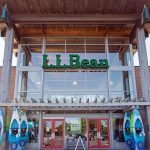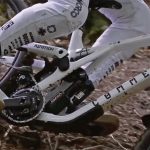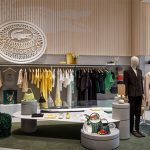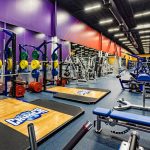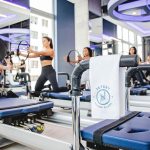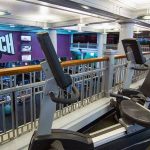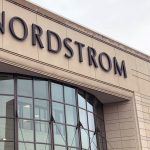Dorel Inc., the parent company to Pacific Cycles, reported its strongest quarter ever in Q3, due in large part to contributions from the Schwinn brand and their new Stingray model. According to a recent interview BOSS conducted with Mo Moorman, Pacifics director of marketing and corporate communications, the company originally planned on selling 70,000 Stingrays. The most recent projections cited by Martin Schwartz, Dorels president and CEO are calling for over 500,000 units.
Dorel Industries third quarter revenues increased 43.5% to $428.2 million compared to $298.5 million in Q3 last year. Gross margins declined by 170 basis points from 24.6% in Q3 last year to 22.9% this year, mainly due to higher raw material prices. Third quarter net income was up 50.5% to $28.2 million compared to $18.8 million. Diluted EPS for the quarter was 86 cents per share versus 58 cents per share a year ago.
The Schwinn brand seems to be recovering from the retailer backlash brought on when Pacific took the icon brand down-market into big-box discount retailers like Wal-Mart and Target. At Interbike, Moorman told BOSS that he felt retailers were coming back around to the Schwinn brand (see BOSS_0441), an position Schwartz seconded in the companys quarterly conference call with analysts.
“Pacific Cycle had its most successful trade show last month with independent bike dealers since acquiring the Schwinn and GT brands,” Schwartz said. “Show bookings were up 80% over last year.”
BOSS spoke with Byron Smith, president and COO of Pacific Cycles, who said that much of the sales growth at Interbike was from existing retailers, and Pacific is working hard to gain more share in their current dealer base. Currently, their focus on IBDs has been on providing product, pricing and terms, but starting next year the company will be allocating more of their marketing budget towards the IBD channel and grassroots organizations.
Moorman admits that the company, and the Schwinn brand in particular, is having a tough time with Independent Bike Dealers, but he says that the bicycle community is slowly returning to Schwinn. Judging by the booth traffic, things are picking up. Last year the company had the same booth, and several reps were standing around with few customers in sight. This year everyone was either showing the line or writing orders.
With bookings for the Stingray at seven times the original projections, Pacific was having troubles shipping the bikes last quarter, but has since ramped up production at several factories and stepped down production of some other models.
Jeffery Schwartz, Dorels CFO and EVP said that the company has been producing Stingrays “basically at full speed” and the current inventory levels at retail are much better than they were three months ago. He also said that they have been noticing increased sales in non-Stingray bicycles.
“We believe that the impact of having the Stingray on the marketplace has done great things for the Schwinn name,” he said. “And the Schwinn name is definitely benefiting from that.” Smith said that he feels the U.S. bicycle business as a whole is picking up, even though he feels there was only 1% growth in the market last year.
But Will it Last?
Smith also feels that the Stingray has been the strongest product launch ever in the bike industry, helping Pacific gain even more market share and adding value to the Schwinn Name.
The demand for the product exploded so quickly, that Pacific was chasing production until just a few weeks ago, and was only able to give Wal-Mart a full inventory two weeks ago.
Smith is fully aware that every trend must come to an end, and his team tracks retail sales and gathers anecdotal evidence weekly. Currently, he feels the Stingray will have a stronger year next year than this year.
Martin Schwartz said that the company will be focusing in the near and medium term on internal growth and “shoring up deficiencies.” This should bring the company more earnings growth than sales growth, but starting mid- to late next year, Dorel will begin to look at acquisition targets again.
One target that has been brought up on many occasions is Huffy, which has just filed for Chapter 11. Martin Schwartz said that it is still too early to know if there is an opportunity there for Dorel, but he told analysts, “When the time comes, we will have to do our part by looking. Past that I cant tell you where we are going.”
Pacific also has some opportunities through international growth. The brand is currently sold in 40 countries through distribution and licensing agreements, but there could be a large upside for Dorel if they choose to set up a sales network of their own in many of these markets.
Dorels Recreation and Leisure segment, which is primarily Pacific Cycle, posted quarterly revenues of $105.8 million while earnings from operations were $14.7 million, or 7.2% of sales. Year-to-date revenues were $261.9 million with earnings from operations of $33.8 million, or 12.9% of sales.
Dorels guidance for the Recreation and Leisure division called for operating margins to be in the 12% to 13% range, but with the division already posting operating margins of 12.9%, and with Christmas around the corner, analysts were expecting increased guidance for the year. Schwartz said it is “possible, but not necessarily likely,” for the division to beat guidance, but offered no further explanation.
Year-to-date, Dorel revenues increased 45.6% to $1.2 billion from $840.1 million, of which Pacific cycles contributed roughly $261 million. Net income grew 21.5% to $66 million from $54.3 million.
>>> While Pacific has done a great job of capitalizing on the American Chopper craze, they should also be asking themselves, “Whats next???”

